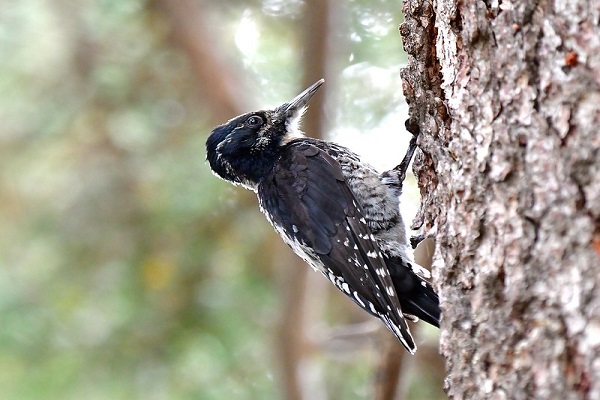
Most people are familiar with woodpeckers because of their distinctive appearance and the way they peck at trees. They are found in wooded areas all over the world and play an important role as biological control agents.
Woodpeckers are omnivorous birds, which means they eat a large variety of plants and animals. But, this is too broad to mention. Let’s look at the specific foods that woodpeckers find delight in!
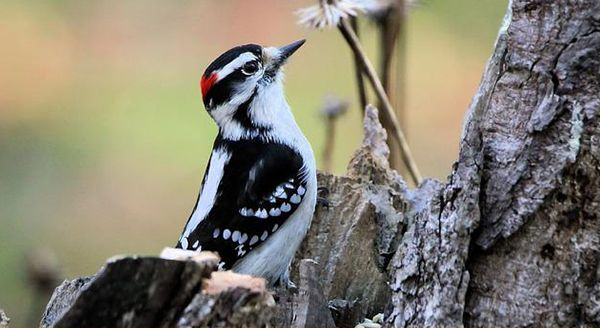
Woodpecker Food Sources
Woodpeckers generally feed on three things: insects, fruit, and tree sap. They use their long, sharp beaks to pierce the bark of trees and dig out the insects living beneath them. Woodpeckers will eat the larvae of wood-boring beetles, which are particularly destructive to trees. And when they wander in urban areas, they might invade bird feeders.
Here are foods that belong in woodpeckers’ diet:
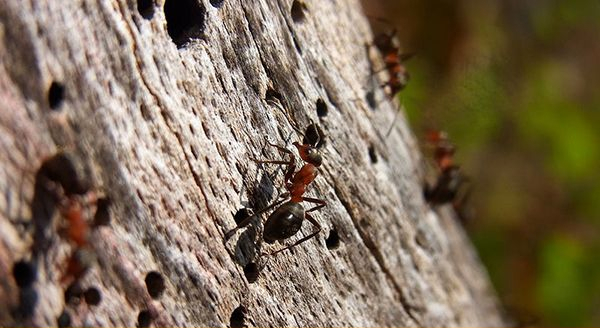
Insects
Woodpeckers love to eat insects. They are the ultimate favorites of almost all flying creatures. Woodpeckers, target tree-boring insects, ants, termites, and beetles that reside in barks. Apart from this, they also love to consume insect eggs, larvae, spiders, and grubs.
To get to these insects, woodpeckers use their beaks like chisels to create tiny holes. Once they’ve made one, they use their long sticky-ended tongues to pull the insects out.
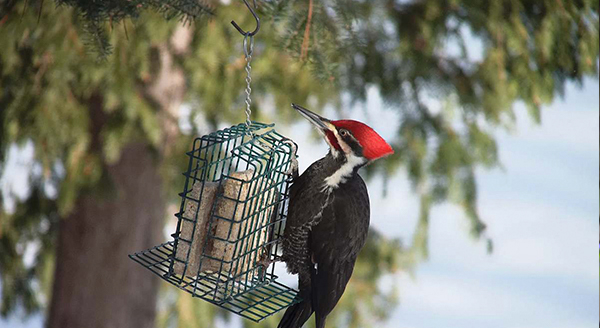
Suet
Insects may be woodpeckers’ favorite food, but they’re not the only thing these birds enjoy eating. Woodpeckers also like to feast on suet. Suets are a type of fat from beef or mutton that is rendered and solidified. These are usually available at local pet stores.
Suets can be made at home too. It’s only a mix of one part fat to two parts cornmeal, rolled oats, or peanut butter. Once these ingredients are mixed, it’s shaped into balls and frozen. It’s sometimes mixed with seeds, nuts, and berries to make suets even more irresistible to woodpeckers.

Peanuts
Woodpeckers love peanuts! They eat raw, unsalted peanuts as well as those that come in butter, cakes, and candy. They’ll eat this delicious peanut snack whether they’re shelled or unshelled. Woodpecker species like pileated woodpeckers, chickadees, nuthatches, downy, hairy, and red-bellied woodpeckers frequent these delicious nuts. Other nuts that woodpeckers eat are pine nuts, almonds, and acorns.
Peanut butter also serves as an excellent source of fat for woodpeckers during the winter. It’s rich in fats, proteins, and calories. The high-fat content in peanuts helps woodpeckers stay warm during cold weather and gives them the energy to keep pecking for food.
Along with woodpeckers, avians like chickadees, wrens, and nuthatches eat peanut butter too.
Black Oil Sunflower Seeds
Seeds may be ranked as the second-best snack for woodpeckers. This is specifically the black oil sunflower seeds- another excellent source of fat. They are small and contain high oil content, which makes them easy for birds to digest. Woodpeckers will also eat sunflower hearts, the innermost part of the sunflower seed.

Acorn
Acorns are the seeds of oak trees that attract woodpeckers. They are an essential food source for woodpeckers because they’re high in fat and protein. Woodpeckers often store acorns in small crevices and holes in trees to eat at a later time.
Acorn and red-headed woodpeckers are among the identified species that feed on them. Other animals like squirrels, deer, and bears have acorns as key food sources as well.

Fruits
Fruits are not a significant part of a woodpecker’s diet, but they will eat them if available. Factors leading to this may be the carbohydrates available and the easy access. Some of the fruits that woodpeckers enjoy include apples, grapes, cherries, and strawberries.
Fruit Jelly
Jelly made from fruits is also an excellent food source for woodpeckers. This is a good alternative if there are no live insects or suet that woodpeckers can consume. Fruit jellies can be made at home or bought at a store.
When making fruit jelly, ripe fruits are used and cooked until they become soft. The seeds and skin of the fruit are removed before they are mashed. Then sugar and water are added and boiled until it becomes thick. Once it cools down, they’ll be put in a clean container and stored in the refrigerator.

Nectar
We know that nectar is hummingbirds’ primary food source, but nectars are another snack that woodpeckers enjoy. Nectars are an excellent source of energy for woodpeckers. They are explicitly attracted to flowers that produce sweet nectar. They would also approach hummingbird feeders, although their beaks are larger than hummingbirds.
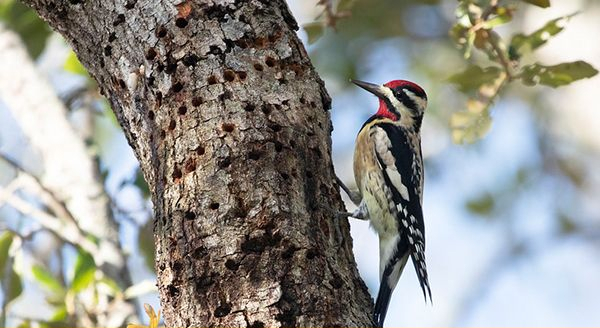
Sap
Woodpeckers eat tree sap too. They are the sugary secretions of trees from wounds in the bark. To eat them, woodpeckers make small holes in the bark and drink the sap that flows out. When the sap hardens, they eat it like candy.
Some of the woodpecker species that consume tree sap are yellow-bellied sapsuckers, red-naped sapsuckers, and Williamson’s sapsuckers. The sweetest tree saps are from maples, birches, and alders. Woodpeckers will also eat the sap from coniferous trees like spruce, fir, and hemlock.
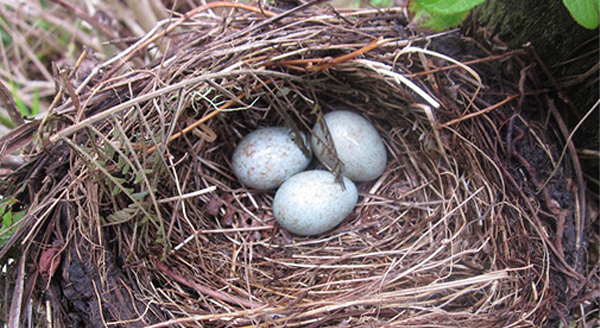
Bird eggs
Woodpeckers’ sharp beaks become ruthless drillers too. There are instances where they’d eat bird eggs. This may be due to the lack of food available, or they simply see it as easy prey. Some species who engage in this behavior are the northern flicker, red-headed woodpecker, and yellow-bellied sapsucker.
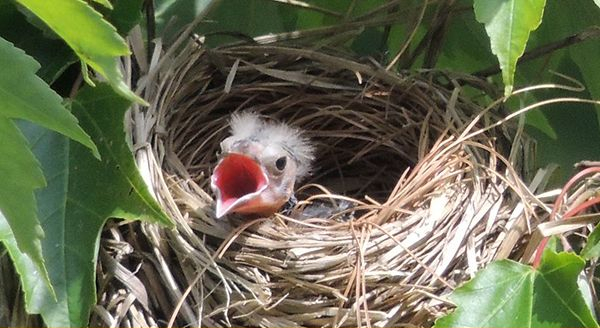
Small Birds
Small birds, nestlings, and fledglings will get no exit from these powerful drillers. Similar to how they get to eat bird eggs, they attack nests without the mother’s presence. One Gila woodpecker was captured on video (graphic) eating a mourning dove fledgling.

Seeds
If you offer a variety of seeds to woodpeckers, they will try them all out. But there are some that they prefer more than others. These include safflower, white proso millet, rapeseed, canary seed, sorghum, and their favorite black oil sunflower seeds.
Downy woodpeckers are known to be the biggest eaters of sunflower seeds. They will even bring some back to their nest to feed their young.
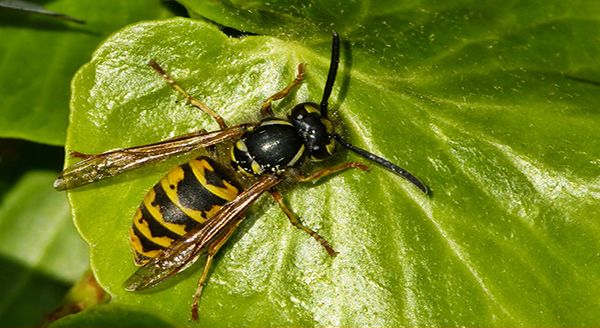
What Other Foods Belong To Woodpeckers’ Diet?
Aside from the list above, woodpeckers also eat the following:
- Wasps
- Flies
- Caterpillars
- Moths
- Lizards, snakes, frogs, toads, and other reptiles
- Mice
- Voles
- Shrews
- Honey
How Do Woodpeckers Hunt and Forage Their Food?
The main foraging tool for woodpeckers is their beak. When hunting for insects, woodpeckers use their beaks to create tree holes and then use their long tongues to reach the insect inside the tree. When foraging for fruits, woodpeckers would use their beaks to pry open fruit and eat it.
Woodpeckers are known to store food in tree crevices and holes so that they can have something to eat during lean times. This is especially important for them during winter when food is scarce. Woodpeckers are also known to be highly territorial, and they will defend their food sources from other animals.
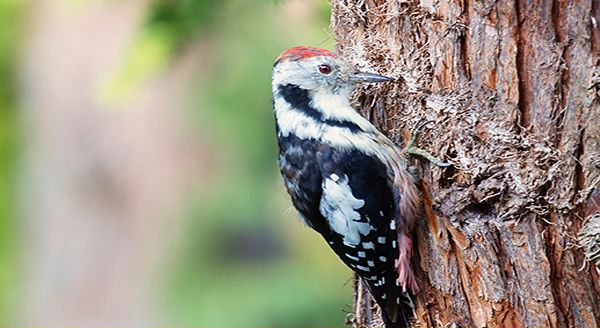
Woodpeckers eating behavior
To find food, woodpeckers will hammer on trees, logs, and other objects like gutters. Woodpeckers use their long tongue to lap up insects. Their tongue can extend almost 2 inches beyond the end of their beak! The length and barbs on their tongue help them reach deep into crevices to get at tasty morsels. Once they find an insect, they use their tongue to sweep it into their mouths.
What Do Woodpeckers Eat During Winter?
During the winter, woodpeckers may have a more difficult time finding food. Insects are not active, and many fruits are not available. During this cold, harsh season, woodpeckers may eat more tree sap or visit bird feeders to supplement their diet.
Winter is considered the food-scarce season for these drillers, but seeds and nuts luckily become more abundant in these times. So, they shift their primary source and may search through sturdy bushes and trees for leftover fruits. They may also depend on humans giving them suet cakes or peanut butter.
Woodpeckers Drumming In Your Home? Call Us Now!
If you are tired of all the drumming and mess these drillers bring to your property, do not hesitate to call AAAC Wildlife Removal. Our team will be happy to help you get rid of these pests for good!
Let’s keep your home woodpecker-free! Reach out to us to schedule an appointment. Be it woodpeckers, bats, skunks, and other unwelcome animals lurking around; we’re only a call away.
Summary
Woodpeckers are amazing wild birds that have many unique adaptations. Their long, sticky tongues help them catch insects. Their sharp beaks allow them to drill holes in trees to get to the insects inside, and their tail feathers act as a prop to keep them from falling out of the tree.
Woodpeckers are not just fascinating drillers; they’re excellent eaters too. They have a wide range of food preferences that help them survive different seasons. Their long tongue and powerful beaks make it easier for them to find and consume food.
So, the next time you see a woodpecker at work, watch how it wiggles its head back and forth as it pecks. It helps the bird to avoid getting a headache from all that hammering!
To learn more about the woodpecker’s diet and its fascinating behaviors, click here: woodpecker diet.







